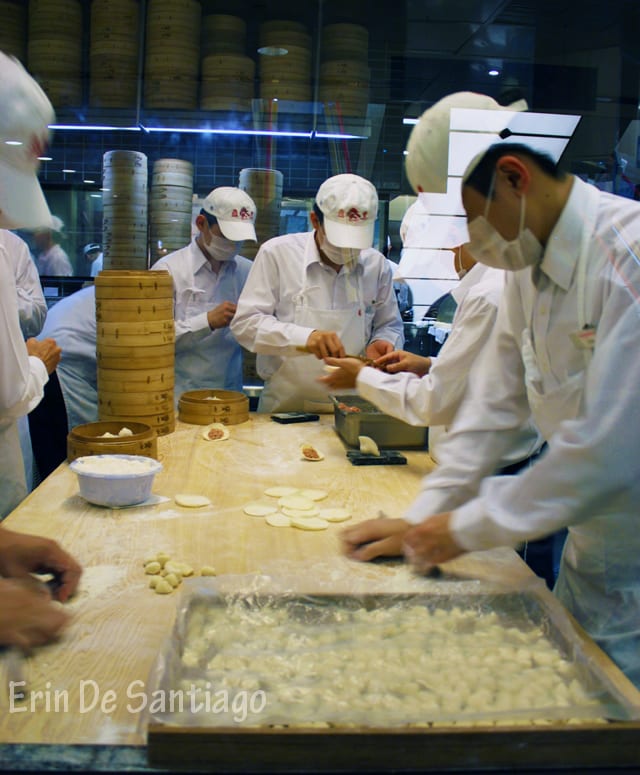Whether you’ve visited Taiwan yet or not, you likely already know one of the biggest draws to the island is, without a doubt, the food. Food is an integral part of the culture here and it figures prominently in important Chinese holidays and traditions.
Although “Taiwan” is not that old (this year marks the 100th anniversary since the founding of the Republic of China (ROC)), the cuisine dates back long before that. Whether it be traditions brought over from mainland China, or the melting pot of cultures that shaped the island’s history thousands of years ago, what has blossomed today is one of the most beloved culinary destinations in the world.
When visiting Taiwan, be sure to include a stop to the Din Tai Fung dumpling house in Taipei. What started as a modest family shop selling cooking oils has grown into an international brand, garnering worldwide praise, culinary awards, and inclusion in nearly every “top ten” or “must do” list for Taiwan travelers. And while you may have run across a Din Tai Fung elsewhere in your travels, nothing beats the dumplings, or xiaolongbao, from the original branch in Taipei.
Contents
Din Tai Fung Xiaolongbao
What Din Tai Fung is most well-known for is the xiaolongbao, commonly referred to as Shanghai soup dumplings in English. The basic pronunciation is “sheow (like “show” in shower), long, bow (as in take a bow, or “ow” in about).

If you speak even a little Chinese, you might recognize that the “bao” in xiaolongbao actually means bun. This is where a bit of confusion in translation can occur, depending on where you are hoping to try xiaolongbao. In parts of mainland China, you will see them referred to as steamed pork buns, while many other parts of the world call them dumplings. When in doubt, just ask for xiaolongbao!
The basic premise behind the xiaolongbao is the soupy broth that explodes from the delicate dumpling skin when eating one. The most popular type of xiaolongbao is pork, but you can find variations including pork with crab roe, vegetable, chicken, and even pork with black truffle at some Din Tai Fung locations.
What really sets Din Tai Fung apart from other dumplings is the precision, care, and training that go into perfecting these little slivers of heaven. Din Tai Fung has a regimented training program upon hire, which I’ve heard can take six to nine months, to learn how to perfect the art of making a xiaolongbao. Their secret is the 18 pleats, which a trained master can do in the matter of three seconds.
I have made these at home, with far less pleats, and I nearly set a speed record at…TWO MINUTES per dumpling. It appears my only future with Din Tai Fung is as a consumer.
When you visit any Din Tai Fung location, in or out of Taiwan, one signature element is the open kitchen. People flock around the big windows to watch the mesmerizing split-second process of making the various types of dumplings.

How to Eat a Xiaolongbao
Yes, there is even a proper way to eat a xiaolongbao. Din Tai Fung prides itself on ensuring that all patrons who are first timers are given the sheet detailing how to eat a xiaolongbao.
You start by delicately picking up the dumpling at the top and dipping it into the proper ratio (3:1) of black vinegar and soy sauce. You then place the dumpling on a spoon and pierce the skin – some people pinch with their teeth and suck the broth out while others poke with their chopsticks — allowing the broth to dribble out onto the spoon. Add a few pieces of ginger and enjoy!

One caveat — beware of the boiling hot broth when the dumplings are first brought out! Let them cool a minute or two otherwise you will scald the roof of your mouth.
History of Din Tai Fung
The founder of Din Tai Fung was born in the Shanxi Province of China but immigrated to Taiwan to escape the civil war in China. Bingyi Yang began work in Taiwan as a delivery boy for his uncle’s cooking oils store, HengTaiFung. He married a co-worker and after several years, found himself unemployed after the shop went out of business.
Yang and his wife started their own business of selling oils and decided on the name Din Tai Fung – he purchased oils wholesale from “DinMei Oils” and combined that with “HengTaiFung” to create Din Tai Fung. This was a show of gratitude for giving him a start in Taiwan.

When purchasing the telephone number for the shop back in 1958 – the same number used today – Yang asked the commissioner to write the characters for the shop sign, which are still on display in the Xinyi store.
Their business took off allowing them to purchase the storefront on Xinyi Road, but the market started to plummet and on the advice of a friend, they turned half the shop into a dumpling shop. Even without any advertising, word-of-mouth spread due to the quality of the dumplings, helping them grow into the international legend they have become today.
Din Tai Fung is listed in nearly every guidebook, earned a nod from the New York Times as one of the 10 Best Restaurants in the world, and their Hong Kong locations have each garnered one Michelin star.
Din Tai Fung Locations
There are multiple locations in Taiwan and now branches in China, Japan, Singapore, Australia, Thailand, the United States and more.
When visiting Taipei, there are five Din Tai Fung locations to choose from, including the brand new Taipei101 branch that makes it very convenient to grab an order of xiaolongbao after heading to the top of the world’s second tallest building. Expect the longest queue lines at the original branch on Xinyi, but it tends to move pretty fast. Average price of an order of dumplings ranges from $5 to $10 US.
